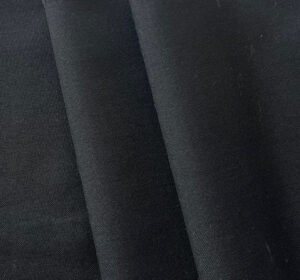Is Rayon Stain-Resistant or Mesh? Exploring Fabric Compatibility
Introduction
Fabric compatibility is crucial in fashion and sewing, impacting the final look and durability of garments. Understanding how different materials like rayon and mesh interact can help you create pieces that are both stylish and long-lasting. In this article, we’ll explore whether rayon and mesh can be successfully mixed, examining their properties, benefits, and challenges, while offering practical sewing and styling tips.
Compatibility Analysis
Can Rayon and Mesh Be Mixed? Yes, rayon and mesh can be combined, but with some considerations.
Rayon, a semi-synthetic fiber, is known for its softness and drapability, while mesh, typically made from synthetic materials like polyester, offers breathability and texture. Their compatibility hinges on understanding factors like texture, weight, stretch, and care requirements. Rayon provides a smooth, flowing base, while mesh adds structure and visual interest. However, care must be taken to address different shrinkage rates and care instructions to ensure a harmonious blend.
Fabric Properties Comparison Table
| Property | Rayon | Mesh |
|---|---|---|
| Fiber Content | Semi-synthetic (regenerated cellulose) | Synthetic (often polyester) |
| Weight and Thickness | Light to medium | Light, airy |
| Breathability | High | Very high |
| Stretch and Elasticity | Low to moderate | Varies (often high) |
| Wrinkle Resistance | Low | Moderate |
| Care Instructions | Hand wash or gentle cycle, low iron | Machine wash, low heat drying |
| Durability and Wear Resistance | Moderate | High |
Benefits of Mixing These Fabrics
Mixing rayon and mesh can enhance texture and visual interest, offering a unique aesthetic that blends softness with structure. The combination improves comfort, providing breathability and flexibility, making it ideal for activewear or summer garments. The drape of rayon complements the airy nature of mesh, creating garments with fluid movement. Additionally, this pairing is cost-effective, as both materials are generally affordable. The blend is versatile across seasons and opens up numerous design possibilities, from casual tops to elegant evening wear.
Potential Challenges
While rayon and mesh can create stunning results, they present challenges:
- Different Shrinkage Rates: Pre-wash fabrics to minimize differences.
- Conflicting Care Requirements: Opt for a gentle wash setting that suits both.
- Texture Clash or Pilling: Choose high-quality materials to reduce friction.
- Seam Puckering: Use appropriate needle and thread to ensure smooth seams.
- Color Bleeding or Fading: Test for colorfastness before combining.
Practical solutions include using interfacing to stabilize seams and selecting patterns that accommodate both fabrics’ properties.
Sewing & Styling Tips
When sewing rayon and mesh together, consider these tips:
- Sewing Techniques: Use a ballpoint needle for mesh and a sharp needle for rayon to prevent snags.
- Needle and Thread: Polyester thread works well for both fabrics.
- Interfacing and Stabilizer: Lightweight interfacing can add structure without bulk.
- Seam Finishing: French seams or serging can prevent fraying.
- Pattern Selection: Choose designs that highlight both fabrics’ strengths, like layered skirts or panelled tops.
- Styling Ideas: Pair a rayon dress with mesh sleeves for a chic look, or use mesh inserts for sporty, breathable activewear.
Care & Maintenance Guide
To maintain the quality of your rayon and mesh garments:
- Washing Instructions: Use a gentle cycle with cold water.
- Drying Recommendations: Air dry to prevent shrinkage and maintain shape.
- Ironing and Steaming: Iron rayon on low heat; avoid ironing mesh to preserve texture.
- Stain Removal: Treat stains on rayon promptly with mild detergent; mesh is typically more stain-resistant.
- Long-term Care: Store garments in a cool, dry place to prevent damage.
FAQ Section
-
Can you wash rayon and mesh together?
Yes, but use a gentle cycle and cold water to accommodate both fabrics. -
Will rayon shrink more than mesh?
Rayon is more prone to shrinking; pre-wash to minimize this issue. -
What needle size should I use for sewing these fabrics together?
Use a size 70/10 needle for rayon and a ballpoint needle for mesh. -
Can you mix rayon and mesh in one garment?
Absolutely, they can create visually interesting and comfortable pieces. -
How do you prevent seam puckering when combining these fabrics?
Use a walking foot and adjust tension settings on your sewing machine. -
Is it okay to mix rayon and mesh for upholstery?
It’s not recommended due to rayon’s lower durability compared to mesh. -
What’s the best way to finish seams with these fabrics?
French seams or serging are effective for a clean finish.
By understanding the properties and compatibility of rayon and mesh, you can create beautiful, functional garments that stand out in both fashion and home decor.


Leave a Reply